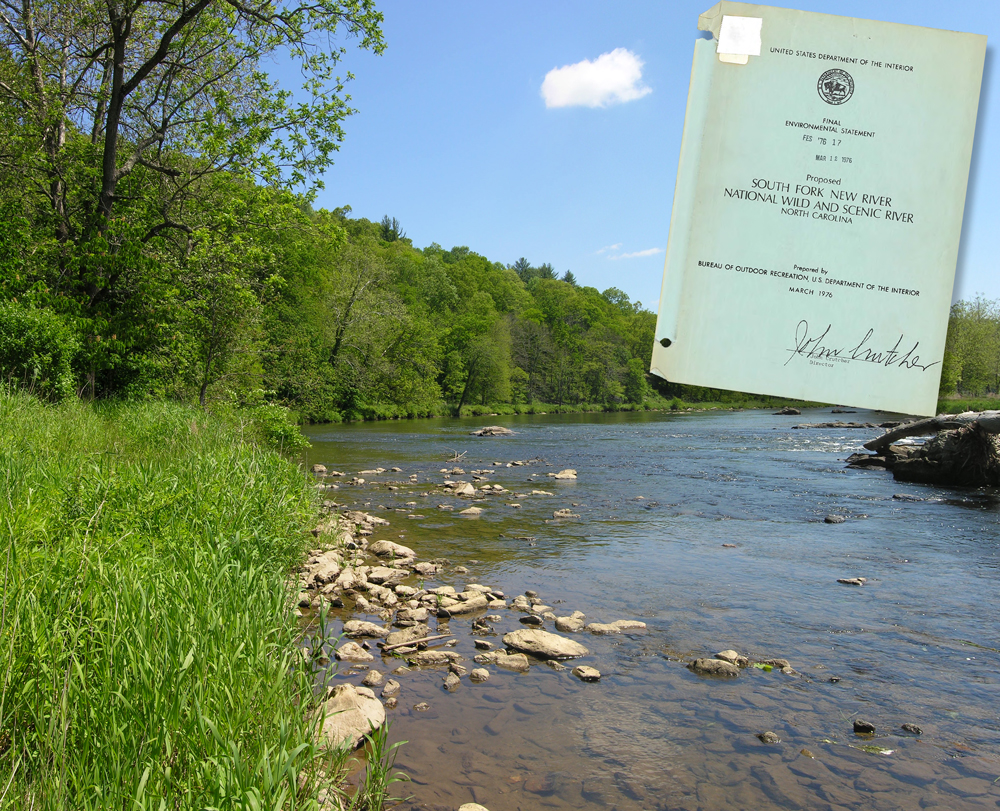The 572 pages of the 1976 Environmental Impact Statement for the New River to be named a National Wild and Scenic River contain a lot of interesting information on the river and the region.

They also include 33 pages of comments from the Appalachian Power Company that outline their opinion on the first draft of the document. Comments that, understandably, outline the company’s objections to the action, and comments that maybe aren’t so understandable.
Certainly not to anyone who has ever stood on the banks of the New River; or waded out into its clean, cool water; or who has floated along through the serene mountain scenery.
Here are some of the comments of an unfortunate lawyer whose job required him to deny the attributes of paradise:
Page 428:
“Only a small handful of our nation’s rivers have been selected by the Congress or by the Secretary of the Interior for inclusion into the National Wild and Scenic River system… The 26.5 mile stretch of the New River and of its South Fork were not even among the 650 rivers originally reviewed.
“Accordingly one would expect some slight indication in the Draft EIS as to what, if any, special attractions of this stretch of the New River have been discovered at this late date which now warrant its meteoric elevation to the select handful of our nation’s rivers deserving of the Wild and Scenic River classification.
“Surely this past ‘oversight’ of the scenic features of the river segment and the particular circumstances surrounding the proposal by North Carolina to have it included in the system clearly suggest that more than the usual scrutiny is required in this case in order for the Secretary to make the judgment that this stretch of river, in the words of the Act, ‘possess[es] outstandingly remarkable scenic, recreational, geologic, fish and wildlife, historic, cultural, or other similar values,’ (Section l(b) of the Wild and Scenic River Act)…”
Page 431:
“What are the scenic qualities which support its inclusion? The Draft EIS briefly mentions… ‘many rapids in the riverway and approximately 10 outstanding rock crops…’ No further description or clue is provided as to the nature or relative beauty of these rapids and rock outcrops. In fact it would appear from the emphasis on history and geology later on in the Draft EIS that its authors may not even be resting the case for inclusion in the System on the scenic qualities of the New River in North Carolina…
“…there would appear to be serious doubt as to whether the portion of the river proposed for inclusion possesses the kind of ‘outstandingly remarkable scenic’ features contemplated by the Act.”
There would appear to be serious doubt as to what was weaker, the man’s vision or his argument.





















